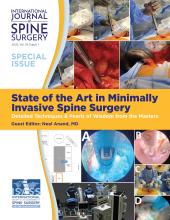ABSTRACT
Background Debate on whether to stop fusion at L5 or to extend fusion to S1 in a long spinal construct has been a controversial topic in spine surgery. Fewer data are available to support whether to include a prior solid fusion at L4–L5 or to extend to S1 during a proximal extension of fusion to T10. The purpose of this review is to report and discuss 2 cases of L5 vertebra fracture after proximal extension of solid L4–L5 fusion to T10 and to provide a guideline to surgeons based on the available literature.
Methods Case report and literature review.
Results Literature review identified multiple publications with levels of evidence from level 2 to level 4. Advanced L5–S1 degeneration with long-segment fusion to L5 is reported to be greater than 60% with a new rate of symptom development approaching 20%–25%. There is no prior literature specific to L5 fracture development after thoracic lumbar fusion with the lowest instrumented level at a fused L4–L5 segment. Reoperation rate is not consistently affected by the lowest instrumented vertebral level L5 versus sacrum/ilium.
Conclusions Literature review is inconclusive as to the need to include the lumbosacral junction when performing a proximal extension of fusion from L5 to the thoracic spine, especially during a revision adult deformity surgery. Stress of the long lever arm of a long-segment thoracolumbar fusion above a prior solid L4–L5 fusion could cause the L5 vertebra to split in the coronal plane, resulting in vertebral body fracture even with a mildly degenerated disc at L5–S1 prior to surgery.
Level of Evidence 4.
Footnotes
Disclosures and COI: Dr Danisa reports personal fees from Spineart and from Globus Medical outside the submitted work. Dr Cheng reports fees from Medtronic and from DePuy/Johnson & Johnson outside the submitted work.
- ©International Society for the Advancement of Spine Surgery







